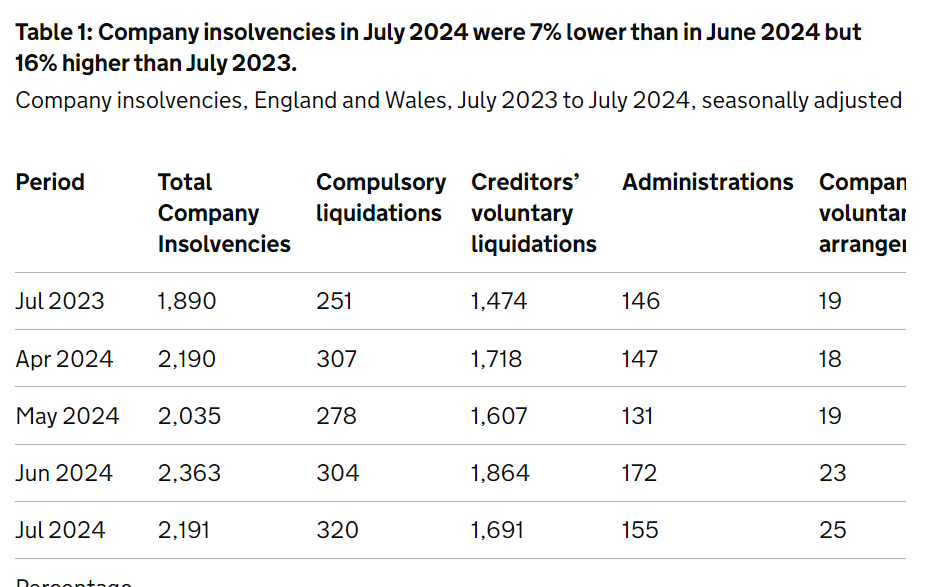The July monthly insolvency statistics have been released. Here we provide a summary overview.
Company Insolvencies
The July 2024 company insolvency statistics for England and Wales showed a total of 2,191 insolvencies, a 16% increase compared to July 2023.
Creditors’ voluntary liquidations (CVLs) remained the most common, comprising 77% of cases.
Compulsory liquidations also saw a rise, reaching their highest level since 2018. Sectors such as construction and retail were notably impacted.
Scotland saw a 21% year-on-year increase in insolvencies, while Northern Ireland’s figures remained stable. The overall trend indicates a gradual increase in insolvency cases across the UK.
Just 25 companies were rescued by using Company Voluntary Arrangements (CVAs) in July. This is unfortunate as surely it is possible that some of the 1000s of companies that went insolvent last month some might have been able to survive by using a CVA?
CVLs
The number of CVLs decreased by 9% from June 2024 but was 15% higher than during the same month last year (July 2023), after seasonal adjustment.
Compulsory Liquidations
The number of seasonally adjusted compulsory liquidations in July 2024 was the highest monthly number since August 2018, 5% higher than in June 2024 and 27% higher than in July 2023.
In 2023, there were 44% more compulsory liquidations than in 2022, but they were still 4% fewer than in 2019 (before to the pandemic). The numbers have risen from the all-time lows observed in 2020 and 2021, when limitations were placed on the use of winding-up petitions and statutory demands, which resulted in compulsory liquidations.
Administrations
The number of administrations in July 2024 was 10% lower than in June 2024 but 6% higher than in July 2023, after seasonal adjustment.
High profile administrations have been few and far between these last few months with Carpetright being the most noteable exception.
It does seem that In the 12 months to June 2024 compared to the previous 12-month period, insolvencies increased by the most in the hospitality sector. The increase was c.15%
This is not surprising given that this includes the period of high inflation in the last half of last year.




